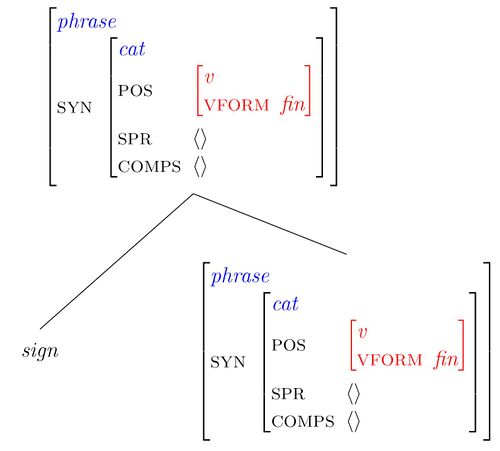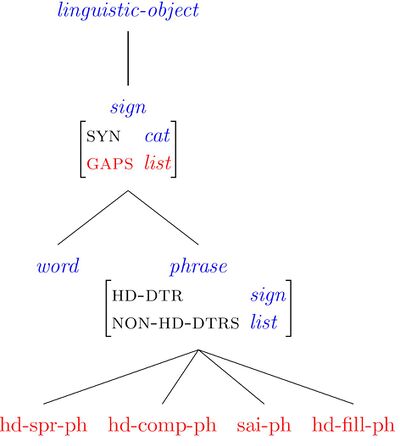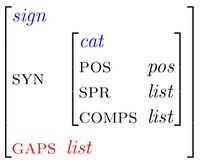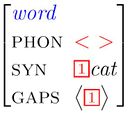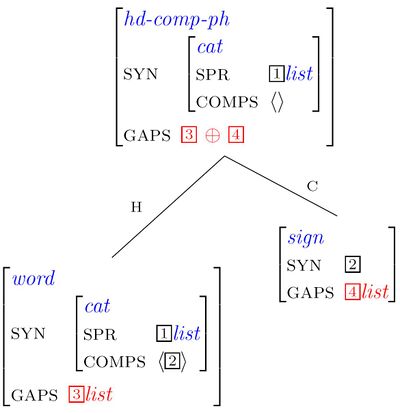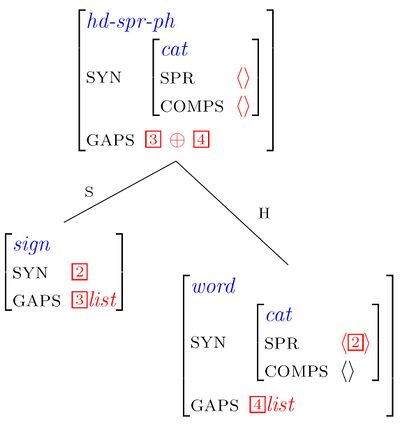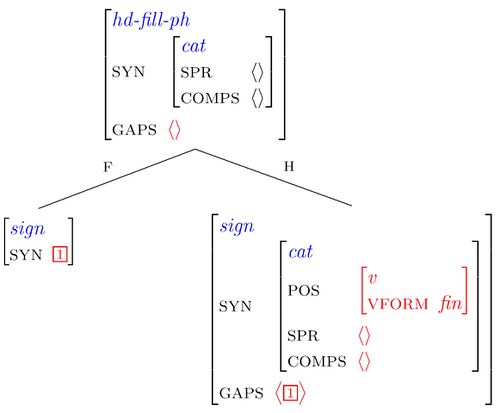Syntax 1 Wiki: Week 8
Step 2 Licensing the extra expression at the beginning of the sentence
The second problem we need to solve in order to license expressions like her she likes is the occurrence of her at the beginning of the sentence. None of the 3 schemas we have available will licence this extra sign at the beginning of a sentence. So, we have no choice but to formulate a new schema. Here it is:
The top node and the second daughter of the schema represent complete finite sentences. The first daugher can be any sign. This schema licenses her as the first daugther of a finite sentence whose second daughter is she likes.
Exercise:
- Go to the Online Grammar 2, which contains the gap and the schema above.
- Parse the following strings:
- him Lilly likes (choose solution 1)
- him Lilly spoke to (choose solution 3)
- to him Lilly spoke (choose solution 4)
This solves the second problem: complete sentences can have an extra sign as their first daughter.
Unfortunately, it is too early to open the champagne
Introducing the GAPS feature
The Gap Collection Constraint
Illustrating the Gap Collection Constraint
The Head-filler schema
We distinguish between two kinds of phrases:
1. Stand(ard) phrases: hd-comp-ph, hd-spr-ph, hd-c-ph, sai-ph
2. Head-Filler phrases: top-ph, question
Remarks:
1. ⊕ is the list merger operator. (to merge = verschmelzen)
2. L1 ⊕ L2 is the new list L3 which contains all the elements of list L1 followed by all the elements of list L2.
Examples:
1. <> ⊕ < a > = < a >
2. < a > ⊕ <> = < a >
3. < a, a > ⊕ < a, b, c > = < a, a, a, b, c >
